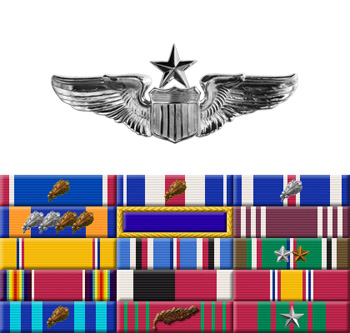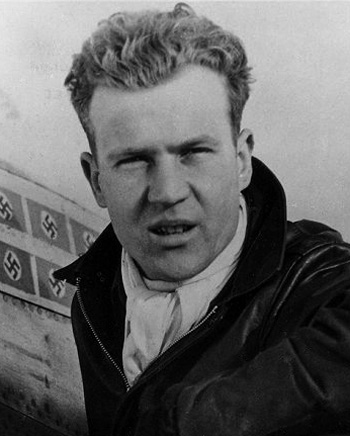
|
Ray S. Wetmore |
 |
|||
| Rank, Service | ||||
Lieutenant Colonel O-5, U.S. Air Force |
||||
| Veteran of: | ||||
|
||||
| Tribute: | ||||
Ray Wetmore was born on September 30, 1923, in Madora, California. He enlisted in the Army Air Corps as an armament specialist on November 24, 1941, entered the Aviation Cadet Program on July 3, 1942, and was commissioned a 2d Lt and awarded his pilot wings on March 20, 1943. Wetmore was assigned to the 321st Fighter Squadron at Westover Field, Massachusetts from March to April 1943, and then with the 370th Fighter Squadron of the 359th Fighter Group, also at Westover, from April 1943 to December 1945, flying combat missions in the European Theater from October 1943 to May 1945. During World War II, Wetmore was credited with the destruction of 21.25 enemy aircraft in aerial combat while flying 142 combat missions in P-47 Thunderbolt and P-51 Mustang fighters. After the war, Wetmore served with the 1st Fighter Group at March Field, California, from December 1945 to November 1946. After attending Officer's Electronics School, he was assigned as Operations Officer with the 37th Fighter Squadron, 14th Fighter Group, at Dow AFB, Maine, from October 1947 to March 1949. Maj Wetmore was next assigned to 1st Air Force, where he served from March 1949 to December 1950. His final assignment was as Commander of the 59th Fighter-Interceptor Squadron, 33rd Fighter-Interceptor Group, at Otis AFB, Massachusetts, from December 1950 until his death in an F-84 Thunderjet flying accident on February 14, 1951. He was posthumously promoted to Lt Col and was buried at the Santa Cruz Cemetery in Santa Cruz, California. |
||||
|
||||

